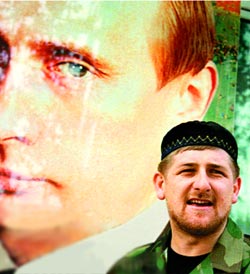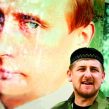
Kadyrov Claims Demise of Insurgency: Rebels Respond with Wave of New Attacks
Publication: North Caucasus Weekly Volume: 9 Issue: 46
By:

Right after Chechen President Ramzan Kadyrov’s sensational statement that he was unable to find a single militant in Chechnya (Radio Ekho Moskvy, November 15)—which he attributed to the fact that none were left—the militants carried out several actions in the republic.
For example on November 17, in the course of a reconnaissance operation in a forested area close to the Komsomolskoe settlement in Chechnya’s Urus-Martan district, the Russian Defense Ministry troops discovered a 10-member group of militants (www.regnum.ru/news/fd-south/chechnya/1085149.html). Both sides suffered casualties in the ensuing brief armed clash. On November 19, an explosion claimed the life of the commander of this reconnaissance unit. The explosion took place as the Russian Defense Ministry troops were carrying out reconnaissance operations. The commander of the reconnaissance unit died on the spot from injuries sustained in the blast (YUGA.ru, November 20). A day later, on November 20, Supyan Girmekhanov, deputy of the District Department of Internal Affairs for Chechnya’s Shatoi district, was gunned down in Grozny during a combat operation to blockade militants in the republic’s capital (Kavkaz-Center, November 29). According to Kavkaz-Center, which is subordinated to the ideologist of the Chechen resistance’s radical wing, Movladi Udugov, Girmekhanov was killed in a rebel ambush.
On November 21, a police officer was wounded in a shootout in Chechnya. Using the cover of a forested area, a group of unidentified gunmen opened fire from automatic weapons and an underbarrel grenade launcher on police officers who were conducting a reconnaissance operation in the vicinity of the Roshni-Chu settlement in the Urus-Martan district (Itar-Tass, November 21). It should be noted that similar actions occurred in this area in the past as well. As a matter of fact, the recurrent assaults in this region forced the Russian army and Chechen authorities to conduct a large-scale military operation to eliminate the militants in the foothills of Chechnya’s Urus-Martan district. During the weeklong operation, the Russian army and special services engaged detachments of Chechen militants on a number of occasions. All information from the conflict zone has been classified. According to a militant source, over the course of the fighting the Russian army and special services lost at least 12 people. At the same time, according to information from independent sources that cannot be verified, only one jamaat member died in combat (Kavkaz-Center, November 23). It was possible to discern from implied messages that the Chechen police also participated in the operation. Reports in the Russian media indicated that the militants wounded an officer of the Criminal Investigations Division of the District Department of Internal Affairs for Chechnya’s Zavodskoy district—police Lieutenant A.M. Jiguev (www.rosbaltsouth.ru/2008/11/24/543566.html).
On November 23, four persons died in the republic’s Grozny district as a result of an assault by the militants. The attack began around 11 p.m. local time, when a NIVA vehicle belonging to a local resident, Musa Talkhadov, came under automatic gunfire from unknown gunmen on Sadovaya Street in the village of Sadovoe. The commotion and noise brought relatives and neighbors to the residence of Talkhadov. These included the car owner’s brother, Lecha Talkhadov, who was deputy commander of the police regiment of the extra-departmental protection service for the Chechen Republic’s oil and gas complex. Everyone was caught in a crossfire set up by the militants. In addition, the noise attracted the attention of Magomed-Sherip Dadaev, an advisor to the Mufti of the Chechen Republic and one of the most famous Muslim theologians of Chechnya, who lived in the neighborhood (www.ingushetia.org/news/16773.html) and was also killed by the militants.
In the district where Ramzan Kadyrov was unable to find militants, a special operation was carried out at the end of November with the assistance of Dagestani police reinforcements. The cause of the operation, as it turns out, was the discovery of a 20-member group of militants in the vicinity of the village Simsir, which is located close to the administrative border between Chechnya and Dagestan. The group was discovered only after the militants attacked the police. One officer was killed and five were wounded in the shootout (Interfax, November 29). Personnel of the district Departments of Internal Affairs for Dagestan’s Novolaksky and Kazbeksky districts were alerted and launched search and reconnaissance operations (www.rusnovosti.ru/news/?/20081129/00/25926).
On November 29, another clash took place between militants and the police, this time on the northern outskirts of Grozny in the vicinity of the settlement of Proletarskoye. Only after the police reinforcements arrived did the combined police forces manage to kill two militants, who put up fierce resistance (www.oreanda.ru/ru/news/20081129/common/events/article349644/). Also on November 29, two federal Interior Ministry servicemen were blown up by an anti-personnel landmine in Chechnya’s mountainous Vedeno district. The blast occurred as Interior Ministry troops were conducting operations in a forested area of the village of Elistanzhi (www.gazeta.ru/news/lenta/2008/11/30/n_1302535.shtml).
Particular attention should be paid to the increasing number of clashes within the city boundaries of Grozny proper, as well as in the villages located close to the republic’s capital. This may be related to the fact that some militants have in all likelihood decided to return to the city to spend the winter there. The level of food supply and finances from the population to the militants is now different from what it was prior to 2006-2007. In other words, out of fear of antagonizing the Chechen authorities and Ramzan Kadyrov, local residents are trying to maintain some semblance of neutrality, which has an adverse impact on the militants’ food supply. Anyone suspected of supporting the militants is instantly arrested, and such arrests are publicized by Chechnya’s mass media in order to warn those who have not yet been caught. The militants’ popular support always worried the authorities, but this year they decided to act. In the ensuing mass detentions, many were accused of participating in and financing illegal armed formations, which under Russian law is punishable by imprisonment.
In general, the situation in the North Caucasus region remains unstable and the authorities anticipate strikes from militants at any time. This has forced the federal authorities to take a note of the developments there. The director of the Federal Security Service (FSB), Aleksandr Bortnikov, admitted on November 27 that “the level of terrorist manifestations in Russia, and especially in North Caucasus, remains high” and that the situation “remains complicated.” However, as has been the usual practice for decades, the Russian leadership blames all such misfortunes on foreign meddling—as the FSB director demonstrated when he stated that “the November 6 terrorist act in Vladikavkaz, where, as a result of an explosion in a taxi mini van, 12 people died and more than 40 were wounded, should be attributed to the militants, who are connected with the international terrorist network” (www.echo.msk.ru/news/556045-echo.html).
Bortnikov’s comments exemplify the authorities’ persistent unwillingness to acknowledge the fact that the North Caucasian jamaats have entered a developmental stage in which the influence of foreign centers is, in essence, only of marginal and nominal importance. The local jamaat structures operate independently from anyone. The only support that they need now is of a financial nature, although when it comes to this issue as well they are sufficiently independent thanks to the 100,000-strong Chechen Diaspora scattered around the world. In fact, this is their main strength—because they can function autonomously—and it underscores their ability to grow as an ideological movement fed by the ideological support of Chechen youth.




